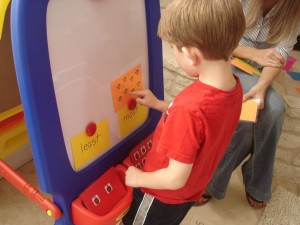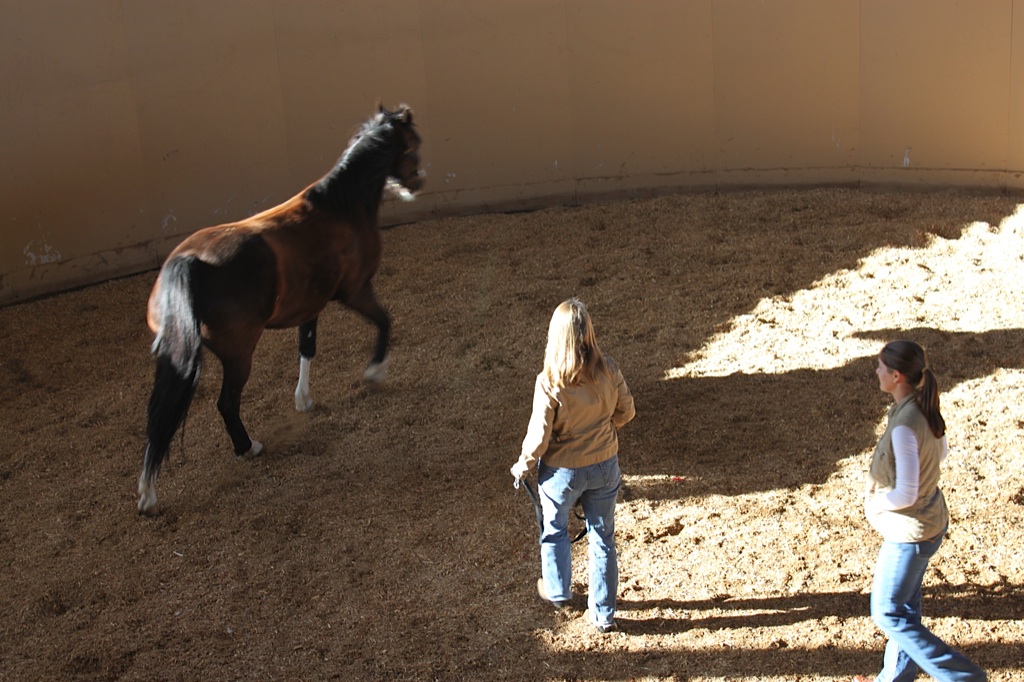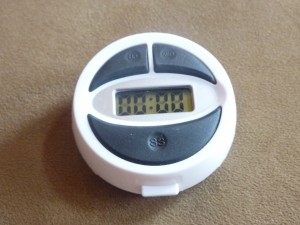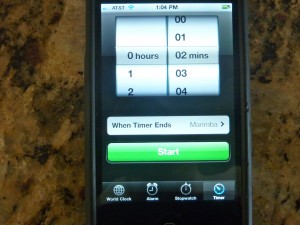I have a few questions for you.
- Do you want to do My Obstacle Course activities with your child but you have other children to tend to?
- Do you wish you could have another set of hands while doing the station activities with your child?
- Do you wish you could have some help preparing the stations or have help watching your child while you set up the stations?
I assure you that you are not alone. This is how I know (except for the “other children” part, which I have heard from other parents 🙂 )…
When Andrew was 4 and had been diagnosed with autism (pdd-nos) and apraxia of speech, it seemed that all of the other parents I talked with took their children to a program nearby designed to build developmental skills. They also had people from this program coming to their houses on days when they weren’t in therapy to work one on one with their child. I looked into this and it cost A LOT of money to have someone (usually a student or intern) working one on one with a child as well as having them come to the house. It just didn’t seem right that I should pay someone a therapist’s fee to work on basic skills that I could do at home. That said, I gladly pay the professionals that work with Andrew to use their knowledge and expertise to help move him forward. I also realize that students and interns have to learn and train, I just don’t want to pay them the same amount I’d pay a professional, even if they are carrying out the professional’s plan. But that’s just my opinion.
I looked at the skills that one particular family was working on in this program and they were so basic, I knew I could do it. At the time, I didn’t know how to make it so he’d want to work with “Mom” doing the activities (this is how My Obstacle Course came to be – so that I could work with him and have him be willing to work with me 🙂 ) but that didn’t stop me because I thought, surely since I was a teacher I should be able to do this. Now I know that I didn’t have to be a teacher – ANYONE who cares about your child can do this, which is what I hope to convey through this website and the station activity ideas I share!
When we began, my primary focus was on building his play skills and I did think it would be a good idea to have an extra set of hands to help me but didn’t want to wait until my husband came home from work. Where was I going to find someone:
- responsible?
- who could drive to our house?
- who wasn’t going to cost me an arm and a leg?
- and most importantly, who would be understanding and respectful of the interesting things that sometimes arise when working with a child who has developmental delays?
Having been in the school of education myself and having had several student teachers while I was teaching, I know that there are tons of students in education or therapy programs who are looking for a few hours of work while also getting experience applying what they are learning with children.
Post an ad at local colleges or universities that have education and/or therapy programs.
Working with a student is not only a huge help for you as a parent or caregiver, it helps them to see the family side of the children that they will be working with. This provides them with a different perspective of some challenges we face, how hard we work and how much joy we experience with even the smallest gains. I have seen them come in fairly timid and unsure of what to expect but after working together, they learn the importance of high expectations, laughter and learning through play. They are also just as excited when something we have been working on for a while finally sinks in!
If you are feeling overwhelmed and want someone to help you with your child’s skill building or if just want an extra set of hands like I did, I encourage you to reach out to any local education programs (or even ask or post something at your therapy location) to see if anyone is looking for extra hours.
Sample Request:
I am the mother of an 8-year-old son who has autism, apraxia of speech and ADHD. I live in the 100 Acre Woods area and am looking for someone interested in education or autism/speech related therapies (OT, SLP) who is willing to help me work with him at our home to build developmental and academic skills. Patience, understanding and a good sense of humor is a must! Activities for our sessions will be provided at first but I may ask you to help me prepare them in the future. You can get an idea of what sorts of things we’ll be doing from www.myobstaclecourse.com and can also get your own ideas from there once you know what we are working on. I am looking for 2 hours a week and pay $15 an hour (the going rate for babysitters in our area) and $10 for gas (since I’ll need you to drive to our home). Email me if you are interested and we’ll set up a time to meet.
I found someone through a teacher at Andrew’s school who also happened to teach a course on Early Childhood Development. I had mentioned that I was looking for some help and she emailed my request to the students in her class. The girl who responded was in the early intervention education program and was willing to come to our house once a week for 2 hours. She worked with me, watched me fumble around as I figured out what worked and didn’t work with Andrew at home (you all are benefiting from these fumbles 🙂 ), got to know Andrew, and got experience doing My Obstacle Courses with us that she eventually put to use in her early childhood class at a nearby elementary school. (She also became a babysitter I could trust so that my husband and I could go out for an occasional adults only dinner.)

Why have a student help you at home?
- Purposeful one on one time with your child at home without breaking the bank.
- Sometimes it helps to have an extra set of hands, especially when working on ball skills and turn taking.
- Someone to help with prepping materials, setting up stations or watching your child while you do this.
- Share the amazing experience of your child with someone else.
Engage, Encourage and Empower!










